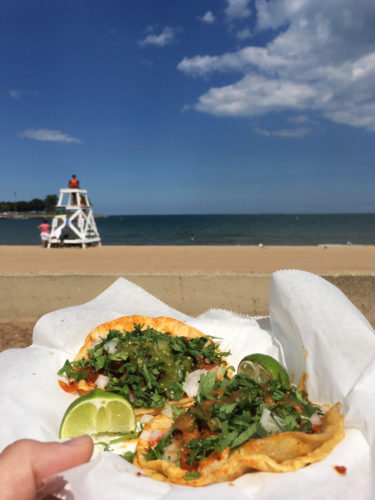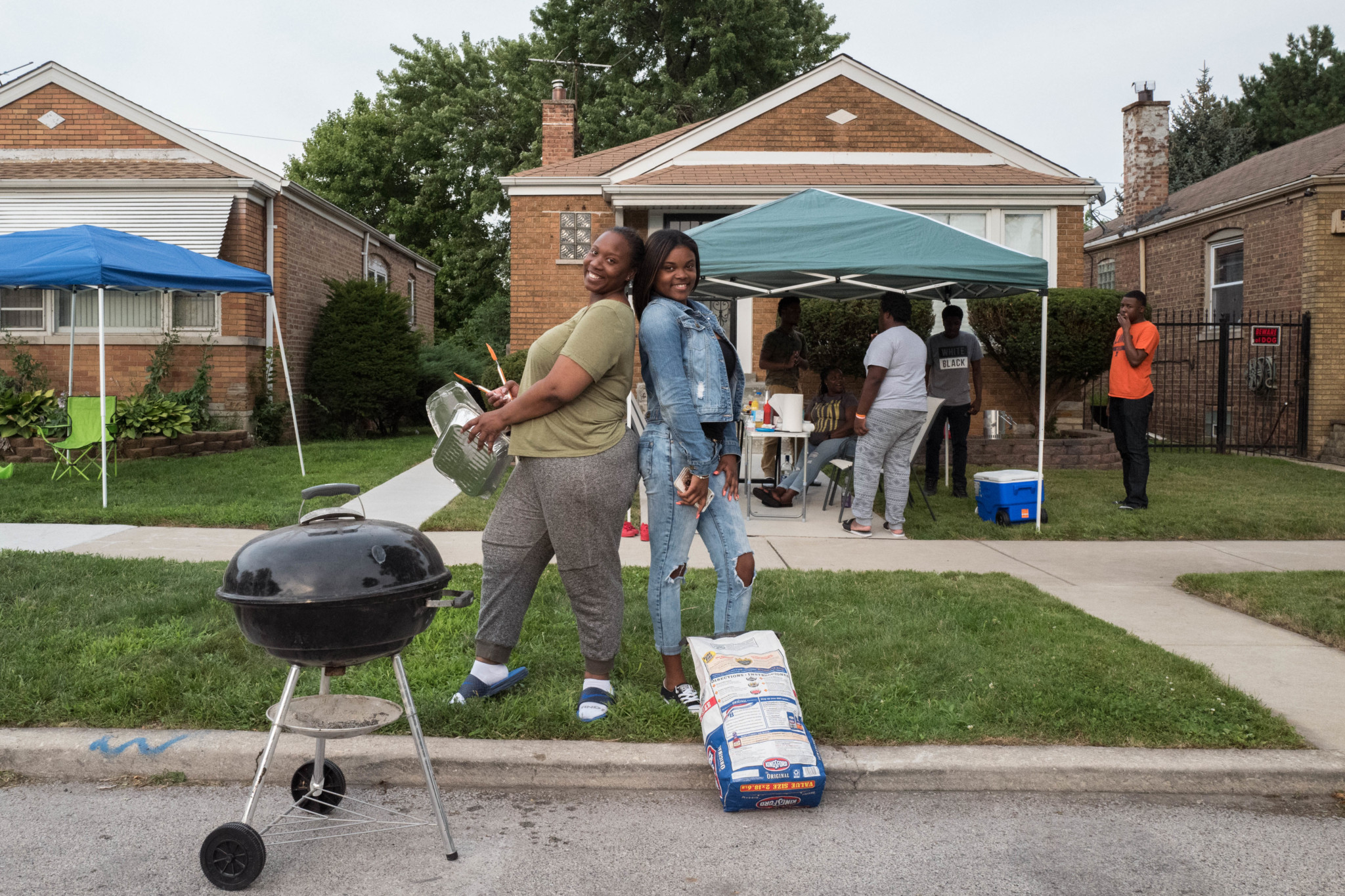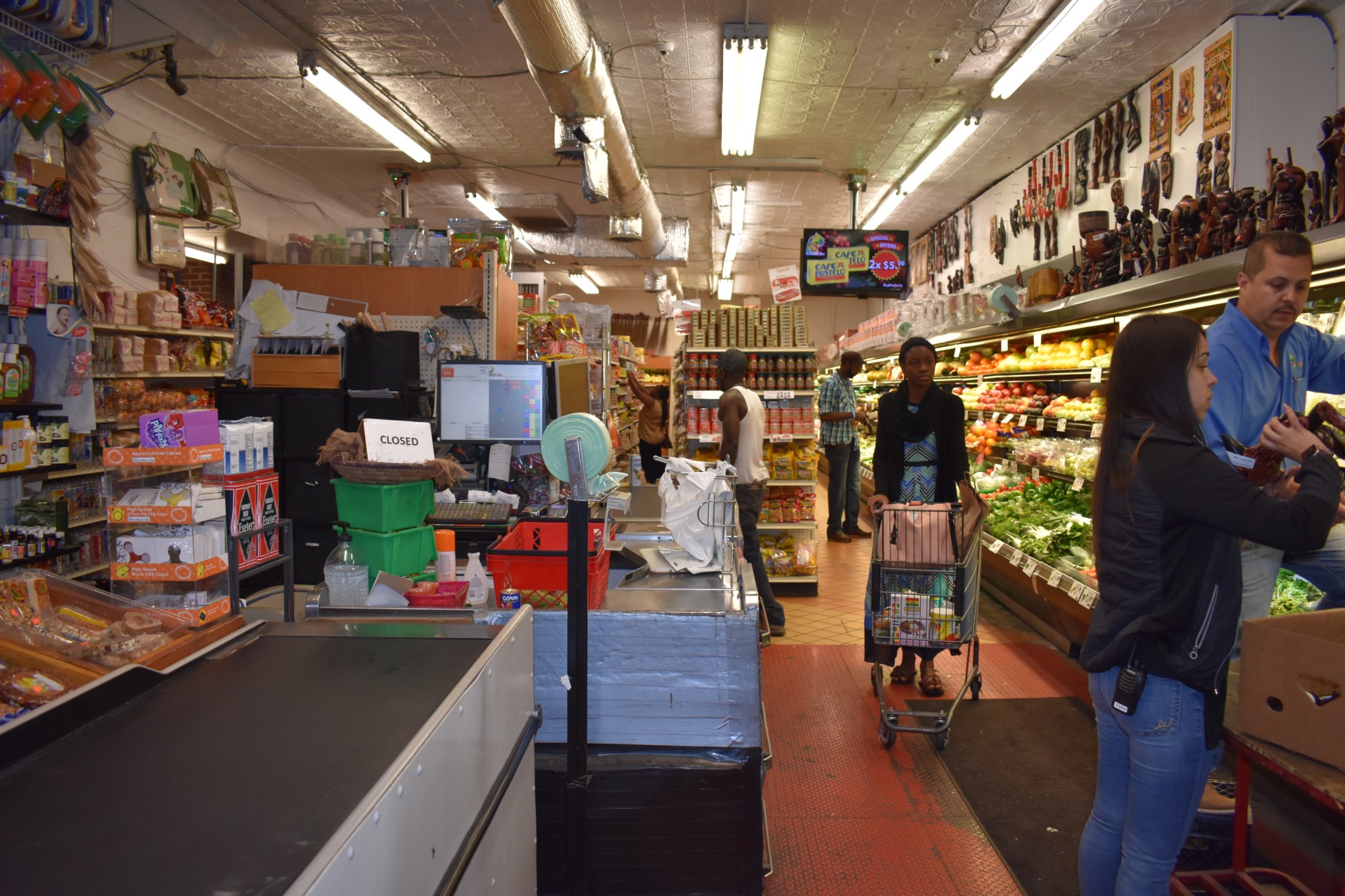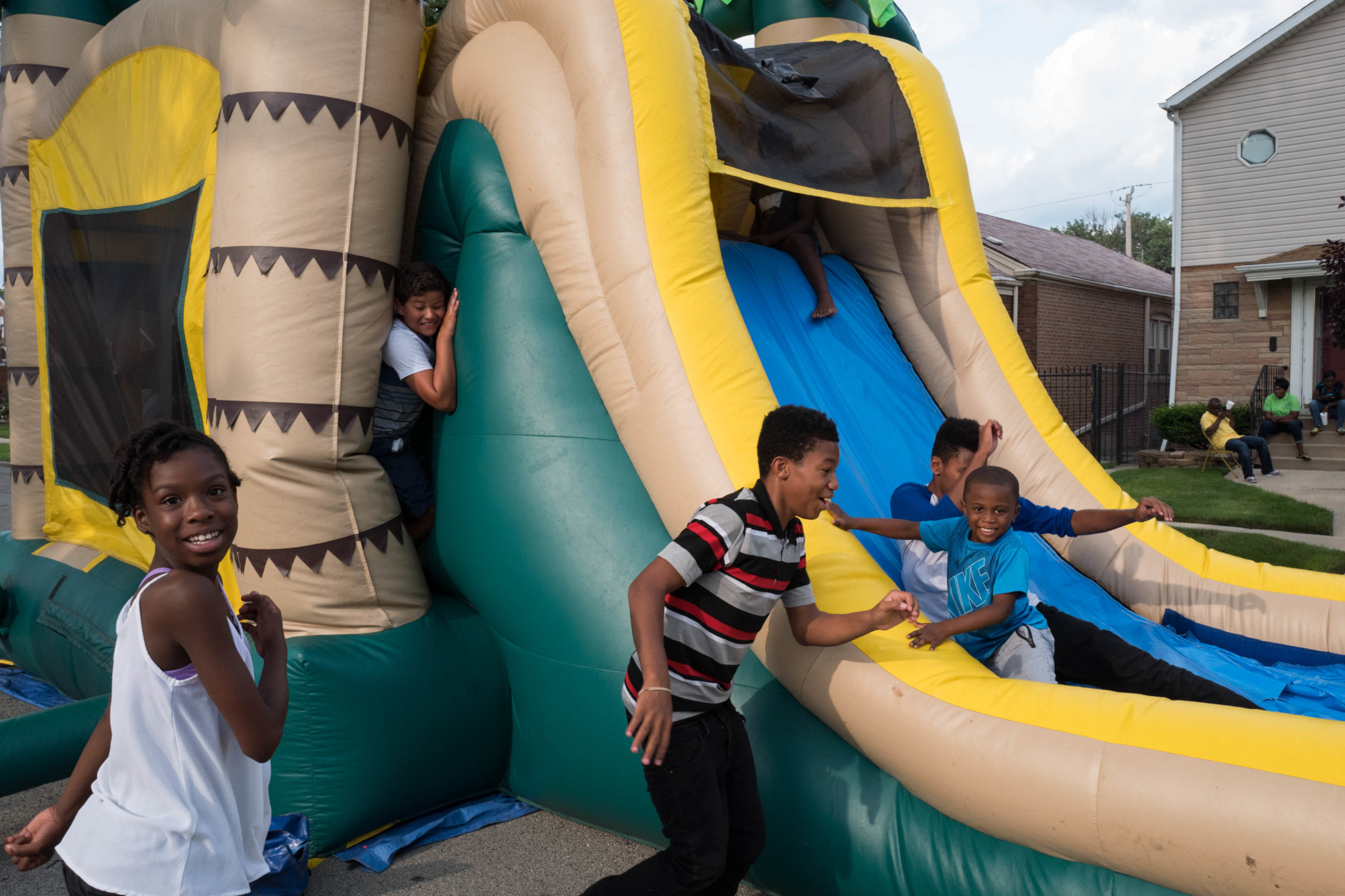There are so many little things that make living in Calumet Heights special, insignificant things really, but the older I get, the more I realize that little things are what matter most to me in life. My neighborhood has no great monuments except for a few charming churches where neighbors gather to give thanks each Sunday. The parks I enjoyed in my youth can’t rival their more famous cousins downtown. Our major thoroughfare, Stony Island, is a workhorse that funnels suburban commuters to the north, not one of the beaux arts visions that sprang from the minds of Burnham or Olmsted when our city was keen to flex its muscles to the world. Even the sleepy little street where I grew up, Ridgeland Avenue, is eclipsed by its more famous sibling to the west, but despite these things I couldn’t be more proud to call this place home.
Calumet Heights is part of a cluster of neighborhoods that have become my point of reference, my home base…the Southeast Side. Pullman, South Chicago, South Shore, Avalon Park, Chatham, and Grand Crossing are all members of this “tribe.” Each neighborhood is distinct and unique, but they all share a commonality that makes me feel at home here. We are all strivers. People here care about each other and dream big. When faced with challenges, we “roll up our sleeves and get to work.” Maybe it’s the proximity to the old steel mills, the refineries of northwest Indiana, or the manufacturing past of Pullman that make everyone here, no matter their socioeconomic status, at heart a working-class person. I grew up among school teachers, city workers, and police officers just a hop, skip, and jump from the doctors and dentists on Pill Hill. At the end of a long week my parents would visit neighborhood “lounges” (a South Side version of the taverns of the North Side) to let off steam and listen to Al Green and Curtis Mayfield on the jukebox.
As a boy I dreamt of an exciting world beyond the Southeast Side from the safety of my hiding place high in a tree in front of my house. I’d often go there to read books in the dappled light of its leaves. I’d listen to the whoosh of sprinklers and the drone of lawn mowers while trying to catch a whiff of grilled meats from some distant neighbor’s grill. My buddies and I would hunt for garter snakes among the ragweed of the railroad embankment by Funtown on 95th in earshot of the rollercoasters and Ferris wheels. It’s funny to me now that at the time this was all happening I didn’t value these experiences at all. I couldn’t wait to get away and discover the “true me” that I knew was out there somewhere. But even after going away to college in New England, moving to D.C., living on the West Coast, and expatriating to Brazil, the simple, “insignificant” pleasures I’d dismissed as a youth kept calling me home.
Now I’m back, in the same house on Ridgeland that I knew as a child with some of the same neighbors I loved. They’re a bit older now but then again, so am I. Some of the things I remember from my childhood like Funtown are gone but most are still here, all the important things. The spirit of the place, the comfort and safety, the care and concern, the can-do spirit are all still here, and even though some stores have closed and old friends have moved away or passed on, the intangible and indescribable spirit of the Southeast Side is very much still here. I hope that you will get a sense of some of the great things that are going on in this neck of the woods by reading this section of the Weekly’s “Best of the South Side Edition” and want to be the first to welcome you to our part of the city!
Ben Handy is the president of the Ridgeland Block Club Association and publishes the neighborhood newsletter The Ridgelander at ridgelandblockclub.com. He is a passionate leader who shares his enthusiasm, strategic thinking, and community building ideas with his neighbors in Calumet Heights. He has professional experience in both the private and public sectors, but his abiding passion to build up communities in need has drawn him more to public service.
Morelos Tacos in Calumet Park

Straddling the Indiana border to the east, Calumet Park beach in East Side is the southeastern-most Lake Michigan coastline in Chicago. The 199-acre park was originally designed in 1903 as part of the South Park Commission’s neighborhood park system, following the plans of the famous Olmsted brothers, which also included Washington and Jackson Parks. The park boasts a seemingly exhaustive list of amenities for year-round use: sports fields, two gyms, a fitness center, the Lake Shore Model Train exhibit, a gymnastic center, sewing and upholstery studios, a woodshop, and multi-purpose rooms.
But in the summertime, the beautiful sandy beach and cool waters of Lake Michigan are obviously the main draw. If you didn’t bring your own picnic, have no fear—I would go as far to say that the beachside concession stand at Calumet Park, Morelos Tacos, is the best in the city. Of course they have the usual fare—beef hot dogs with distinctly neon green relish, burgers, chips, candy, soft pretzels, and pop—but the clear standouts on the menu are the tacos and tortas. For taco options, they offer steak, chicken, chorizo, and al pastor, topped, of course, with cilantro and onion and served with limes and homemade salsa. I ordered my usual go-to, al pastor, and I wasn’t disappointed. The meat was perfect, juicy and flavorful, and the marinade was the ideal blend of sweet, savory, and spicy. In fact, some of the best I’ve had, with a location that can’t be beat.
Although I didn’t order it, I’m going to have to return for the milanesa tortas—the lifeguard in front of me in line ordered one (I’m sure park employees know this place better than anyone) and it looked sublime: a toasty bun, with crispy breaded steak, cheese, lettuce, and toppings pushing out from the sides. Regardless of what you order, how can you really go wrong with fresh tacos and tortas on one of Chicago’s best beaches on a sunny summer’s day? (Andrew Koski)
Calumet Park, 9801 S. Avenue G; Morelos Tacos, 9807 S. Ave. G. Fieldhouse open Monday–Friday, 8am–9pm; Saturday, 9am– 5pm. Park open daily 6am–11pm. Beach open daily Memorial Day to Labor Day, 11am-7pm. (312) 747-6039. chicagoparkdistrict.com
Ridgeland Homecoming

If there’s one thing to be said about the members of the Ridgeland Block Club Association (RBCA), it’s that they know how to put one hell of a block party.
That’s not a surprise, seeing as they’re no newcomers to the thing. While the RBCA’s Homecoming Block Party—which spans the four blocks of Ridgeland Avenue from 91st Street to 87th Place, and the two blocks of 87th directly to the west of Ridgeland—is only in its third year, some of these blocks have been throwing block parties forever. Sherry Rodgers-Hamelin, proud treasurer of the RBCA, says there’s been a party on her block “every year since I’ve been here, and I’ve been here thirty-six years.”
But the RBCA’s annual Homecoming Block Party is doing something new with the end-of-summer tradition. Those festivities were organized by and held on a single block; the RBCA’s Homecoming Block Party is six blocks. And it’s growing. Sean Conner, point man for Ridgeland residents living between 90th and 91st, said that “it’s the very first year” his block has participated in the party. “And it’s going to grow from here.” Today, the Homecoming Block Party has morphed into something spectacular: three DJs, a couple bouncy houses to boot, some food trucks, and barbecue galore. Richard Alapack—artist, activist, and founder of We All Live Here—even swung by to make some street art for the occasion. “There’s something for everyone,” Conner tells me. And he’s right, down even to the music choice. The DJ right outside his house is playing an old school set. “We’ve got a lot of old people. This is for them,” Conner says. Down the street, the other two DJs are spinning a mix of house and R&B. As a child of the 1980s, it’s the house that Conner is excited about, which happens to be what the DJ on Rodgers-Hamelin’s block is playing. She says to “send him down here.” That seems to be what the Homecoming Block Party is all about: meeting not just the next-door neighbor, but the neighbor on the next block, and on the block after that—really, the entire community. “It’s not just about the Ridgeland Block Club,” Conner tells me. “When we were growing up, everybody knew people from all over. So we advertise every block really, from Stony all the way to Jeffrey.”
Three years in, and organizers of the Homecoming Block Party are in high spirits. “We expect this to grow,” Conner says. But it’s not attendance that animates the festivities. “We just want the spirit,” he adds. “The spirit of love, camaraderie, and remembering the old. That’s what it’s all about.” (Michael Wasney)
Ridgeland Block Club Association, Ridgeland Ave. (872) 240-2933. facebook.com/ridgelandblockclub
Bronzeville Children’s Museum
The first question many visitors insist on asking when they walk into the cream-colored building on the corner of 93rd and Stony Island, Peggy Montes wryly notes, is the obvious one. “People who come in always say, ‘What’s with the name?’ But there’s a Bronzeville in Milwaukee, Cleveland, L.A.—‘Bronzeville’ just means wherever black people live,” the Bronzeville Children’s Museum president says. “We called ourselves that because we wanted to emphasize culture at that particular time, when migrants were able to accomplish what they did in the segregated area known as Bronzeville.”
The idea for a Black children’s museum—the first of its kind in the U.S.—came to Montes twenty-four years ago, on a trip from Dallas to Houston to visit a convention put on by the Association of Children’s Museums. When she returned to Chicago, she scraped together enough money to open the museum’s first incarnation in Evergreen Plaza. (The ribbon-cutting ceremony was attended by then-State Senator Barack Obama.) And despite its move to a new address, few things have changed in the interceding years. Montes is perhaps even more of a venerable institution herself, on a par with the museums she’s spent much of her life furiously working at and advocating for. At eighty, she’s a chairman emeritus at the DuSable Museum, and a member of the Illinois Arts Council. But the museum’s principles remain the same. “I believe that museums should be educational, even with very young children,” she says. “And I’ve always loved cultural institutions. We’re about exposing all people to the history, culture, and continuity of African Americans.”
The exhibits reflect this educational philosophy. In the STEM room, for instance, students are given space to interact with plasma balls and green screens, while the portion of the museum focused on nutrition is, practically, aimed at combating the rising epidemic of childhood obesity. The highlight is perhaps the exhibit on Black inventors (famous and obscure), which features a wax-like statue of George Washington Carver surrounded by scattered soybeans, peanuts, and sweet potatoes. There’s also a video in which Washington Carver, now our animatronic emcee, guides us through a tour of Black inventors whose ideas have changed the course of ordinary life: Elijah McCoy, Patricia Cowings, Madam C.J. Walker. The blend of fun and education, Montes says, is an attempt to teach to engaged students with a greater purpose in mind: “This is a small world, now. We need to know about the history of all of the people of the world, so we can get along with each other.” (Christian Belanger)
Bronzeville Children’s Museum, 9301 S. Stony Island Ave. Tuesday–Saturday, 10am–2pm. (773) 721-9301. bronzevillechildrensmuseum.com
Best African & Caribbean Grocery Store
La Fruteria

It’s easy to become a little exasperated with the “international” aisle at your local supermarket—the neat partitioning of countries and cultures, the dearth of choice outside a few popular culinary traditions. One place to turn for relief from this frustration is La Fruteria, the Mexican, Caribbean, and West African grocer along Commercial Avenue. (Owner Antonio Macias is a bit of a local impresario; he also runs Macias Produce a few storefronts down.) It’s the sort of place that respects the distinction between sweet potatoes, yams, and boniato, and gives half an aisle to different West African palm oil varietals. The store contains what feels like an infinite number of spice racks—Mexican for chipotle flakes and chia seeds, West African for ugba and dawadawa—and there’s a big butcher in the back where you can buy goat and oxtails, or just turkey drumsticks and ground beef. In short, come here for the things that Mariano’s, Jewel, or Treasure Island can’t give you. (Except for the sound system blasting Shaggy, who seems fated to haunt every grocery store under the sun for the rest of time.) (Christian Belanger)
La Fruteria, 8909 S. Commercial Ave. Monday–Saturday, 7am–8:45pm; Sunday, 7am–7:45pm. (773) 768-4969.
Support community journalism by donating to South Side Weekly


This was a great read ????. I forwarded to former residents. Thanks so much.
I really enjoyed your article. It brought back a lot of memories. I grew up in the neighborhood as well. Graduated from Caldwell. I remember going to Woolworth’s on lunch break. It sounds like your Block Party is very special.